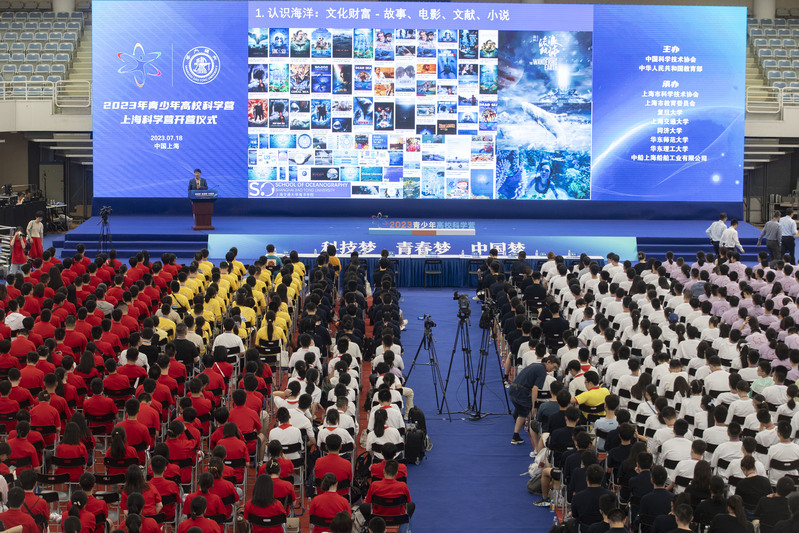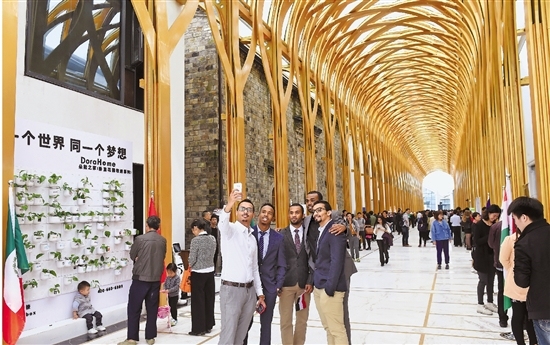We will go home with a beautiful and dignified atmosphere!, Someday
The British Museum recently revealed that about 2000 cultural relics in its collection have inexplicably disappeared and appeared for auction. The incident not only shook the UK, but also touched the hearts of all countries that have cultural relics in the British Museum. This includes China.
It is reported that there are about 23000 cultural relics from China in the British Museum, of which about 2000 are on display for a long time, including the Tang Dynasty copy of the "Women's History Proverbs", the three colored Arhat of the Liao Dynasty, the bronze wares of the Shang and Zhou Dynasties and other extremely precious national treasures.
With the deep emotion of "hoping for national treasures to return home" once again stirring up the public opinion field, a self-made short drama by netizens named "Escape from the British Museum" has become popular. The story of a Chinese entangled branch patterned thin jade teapot transforming into a human form and fleeing has left netizens feeling uneasy for a long time.
How have our cultural treasures been lost overseas? How can I pick them up and take them home?
Still photo of "Escape from the British Museum"
Time goes back more than a hundred years, from the end of the Qing Dynasty to the Republic of China period. Political turmoil and wars continued frequently, and the land of China was fragmented. This was the "barbaric era" when foreigners obtained Chinese cultural relics, and it was also a dark night in Chinese history.
In the mid-19th century, especially after the Opium War, developed Western countries sparked a wave of exploration to the distant East. Through the country's gates bombarded by strong ships and cannons, groups of explorers set foot on Chinese soil, using various pretexts such as academic investigation to steal a large number of Chinese cultural relics.
In 1879, Luo Keqi, president of the Hungarian Geographical Society, went to Gansu Province to investigate, and accidentally saw exquisite statues and murals in the Mogao Grottoes of Dunhuang. In 1899, Swedish explorer Sven Hedin entered Taklamakan and discovered the long forgotten ancient city of Loulan. The exotic legend caused a sensation in the world, with British, French, Japanese, Russian, German, American and others flocking here, followed by the cutting of murals, removal of Buddha statues, and massive loss of cultural relics.
The so-called "feats" of Western explorers have aroused great interest from foreign collectors and antique dealers. In the first half of the 20th century, a large number of foreign collectors and antique dealers went to China to search for ancient artworks, and even Chinese antique dealers took advantage of this opportunity to make profits. Among countless antique dealers of all sizes, the Lu Wu Company was the largest in the United States at that time.
The Lu Wu Company exported cultural relics to the West for thirty years. Some people say that "half of the antiques flowing from China to overseas were made by Lu Qinzhai", and the national treasure level cultural relics include two relief works, "Sa Lu Zi" and "Quan Mao Jiao", from the six horses of Emperor Taizong's Zhaoling of Tang Dynasty.
Some cultural relics and treasures purchased by collectors are donated to museums for collection, while others are taken as their own. According to statistics, about 1.6 million ancient Chinese artworks are collected in public museums throughout the Western world, but this is only about 20% of the lost Chinese cultural relics, while the other 80% are collected in private hands and mostly not publicly disclosed, which is still an unsolved mystery.

Lu Qinzhai unpacked and registered the Northern Wei Buddhist statue monument sent from China
The country is weak, sovereignty has been lost, smoke of gunpowder has spread, and the people are struggling. It is also a catastrophe for cultural relics.
According to the statistics of the Chinese Cultural Relics Society, since the Opium War in 1840, over 10 million Chinese cultural relics have been lost to countries and regions such as Europe, America, Japan, and Southeast Asia.
The well-known tragic scene was when the British and French forces stormed into the Old Summer Palace. The greedy invaders divided the area and crazily looted the treasures in the Old Summer Palace, "move what can be moved, and destroy what cannot be moved.". Countless exquisite silks were brutally torn apart, exquisite jade artifacts were cruelly shattered, and calligraphy, painting, and cultural relics were recklessly damaged. The collection of almost all the achievements created by a nation beyond human imagination ultimately fell into ruins.
According to incomplete statistics from UNESCO, thousands of Chinese cultural relics are scattered in 47 countries around the world, and Japan is the largest country in the world. According to official statistics from China, from 1931 to the end of the Anti Japanese War in 1945, as many as 1879 boxes of cultural property were abducted by Japan, and countless cultural relics were looted. After the war alone, Japan's own statistics reached 3.6 million pieces.
In the long years of exile, some well-known cultural relics may have lost their way through traceable sources, but more often they have quietly disappeared without a trace. How many Chinese people, who have been exhibited in museums in foreign lands, suddenly saw Chinese cultural relics and treasures drifting away, how regretful and heartbroken they were.
Former director of the Palace Museum in Beijing, Shan Jixiang, once said, "Cultural relics have the most dignity only when displayed in their original place. If they are lost overseas like lonely souls and wild ghosts, they have no dignity." If cultural relics can speak, then the voice of "I want to go home" in many foreign museums will surely resound through the sky.
With a single thought in mind, all mountains are unobstructed. Overcoming difficulties, hoping to return to my hometown.
The loss of numerous cultural relics overseas is a tragedy of Chinese civilization. It is the responsibility of the Chinese people to bring back lost cultural relics. From the government to the public, efforts from all sides have never stopped for decades.
"To preserve culture for the country is like fighting on the battlefield. Scholars are also warriors, only advancing and never retreating." This is the famous saying of Zheng Zhenduo, the first director of China's Cultural Relics Bureau. "Treasures are hidden in the country" is his consistent approach. In the early 1950s, a large number of national treasure level cultural relics flowed out of Hong Kong. With the assistance of Xu Bojiao and others, Zheng Zhenduo vigorously rescued the scattered cultural relics. He spared no effort in writing and translating manuscripts in the quiet of the night to earn money, and also saved expenses to reduce his living standards to only eating bread and drinking plain water.
Under the relentless running and twists and turns, many cultural relics, such as calligraphy and painting "Mid Autumn Festival Calligraphy", "Boyuan Calligraphy", "Xiaoxiang Painting", "Five Bulls Painting", "Han Xizai Night Banquet Painting", Xunzhai Shanben, Chen's ancient coins, etc., have thus freed themselves from the fate of drifting and wandering.

According to authoritative reports, since 1949, China has firmly pursued lost cultural relics through various means, and has facilitated the return of over 300 batches and over 150000 lost cultural relics.
For example, the largest and most exquisite bronze square lei unearthed so far, the "vessel square lei", reappeared in a chaotic era in 1919, but a few years later, the body and lid of the vessel were reluctantly separated from each other. Until 2014, people from Hunan used crowdfunding to purchase equipment for over 20 million US dollars and returned to China, ultimately bringing together national treasures that had been separated for nearly a century.
The migration process of every cultural relic is a mysterious and legendary story. The journey home of every cultural relic embodies the efforts and hard work of too many people. But not every treasure can go home smoothly as expected. For example, as mentioned earlier, the second of the six horses from Emperor Taizong's Zhaoling Mausoleum, although relevant parties have tried their best to promote reunion and even proposed the idea of exchanging cultural relics for cultural relics, Chinese experts have also visited the Binda Museum for restoration work, but the second horse has not yet returned.
Is the end of the world without a sense of return, and the time for return is unpredictable.
The long journey home is not easy to walk. It's not just a simple sentence of "rightfully returning" that others will gladly agree.
At present, there are three main channels for the return of overseas cultural relics: repurchase, donation, and recovery.
Repurchase mainly refers to the commercial purchase of cultural relics that are difficult to return through legal and diplomatic means in specific circumstances. Although this has played a huge role in the process of cultural relics returning, it is only a temporary measure. Spending money to buy back stolen treasures not only causes secondary emotional harm to the public, but also increases the price of cultural relics, which can easily promote new illegal loss.
Donation refers to the goodwill donation or diplomatic return of lost cultural relics obtained by governments and government institutions such as museums, including overseas Chinese, international friends, etc. to China. This is currently the most common way for cultural relics to be returned, and intergovernmental cooperation for the free return of cultural relics also belongs to this category. In recent years, with the continuous increase of China's influence, the scale of returning Chinese cultural relics and artworks has continued to expand, and more and more Chinese cultural relics that have drifted overseas have embarked on the path of returning home.
Recourse is a way of resolving disputes over the ownership of lost cultural relics in accordance with international conventions and the laws of relevant countries, and it is also the most consistent way of return with the spirit of relevant international conventions and ethical principles. However, due to the limitations of the convention, this is also the most difficult way of return.
In 1970, UNESCO promulgated the Convention on the Methods of Prohibiting and Preventing the Illegal Import, Export and Transfer of Ownership of Cultural Property. It is stipulated that since 1970, anyone who smuggles cultural relics from some ancient civilized countries through illegal channels must be unconditionally returned once discovered.
Under the protection of this convention, China has recovered some cultural relics. For example, in June 1994, the tomb of Wang Chuzhi from the Five Dynasties period was stolen and excavated on the Xifen Mountain in Xiyanchuan Village, Lingshan Town, Quyang County, Hebei Province. In March 2000, a stone carved painted samurai statue auctioned off in New York was confirmed to come from the tomb of Naoki Wangchu. The National Cutural Heritage Administration of China immediately sent a note to the U.S. Embassy in China, asking the U.S. side to suspend the auction and return the lost cultural relics. The US government actively cooperated and returned this relief warrior stone carving to China after a year of trial.

Unfortunately, this convention is useless for the return of cultural relics that were lost before 1970, and most of China's cultural relics were lost during the late Qing Dynasty and the Republic of China period.
Cultural relics are material relics that carry culture and embody the spiritual pursuit of a nation. Behind them is a complete civilization system, and their fate is also a record of the national and ethnic history.
Cultural relics witness the vicissitudes of the world and breathe with the country, sharing a common destiny. When mountains and rivers are shattered and the country is in chaos, even the basic livelihood and normal rights and interests of the people cannot be safeguarded, cultural relics will also suffer a catastrophe. Today, the land of China has changed to a new world, and the overall improvement of national strength and the comprehensive awakening of national consciousness are the most hardcore forces that promote the return of cultural relics.
Indeed, in history, some Chinese people and even officials have intentionally or unintentionally become accomplices of cultural relics traffickers. But today, every news and topic related to the return of cultural relics to China, without exception, will trigger a huge emotional stir in the public opinion field. This is enough to reflect people's difficulty in calming their emotions towards the loss of lost pearls and their earnest anticipation for the return of national treasures.
Enmity and resentment, lost for a hundred years. We mourn the loss of national treasures and make unremitting efforts to encourage them to return home. It is precisely because of the various difficulties we have experienced that we understand better: only when a country is strong and a nation is revitalized can national treasures stay away from bad luck.
Never forget, there will always be an echo. We hope that those "two heroes" who have witnessed the peak of civilization of a country or a nation, but have also been displaced due to turbulent times, can return to their homeland and witness the prosperity and brightness of China.
The six horses exhibited at the Xi'an Beilin Museum, of which two are replicas. Photo by Wang Baoguo




